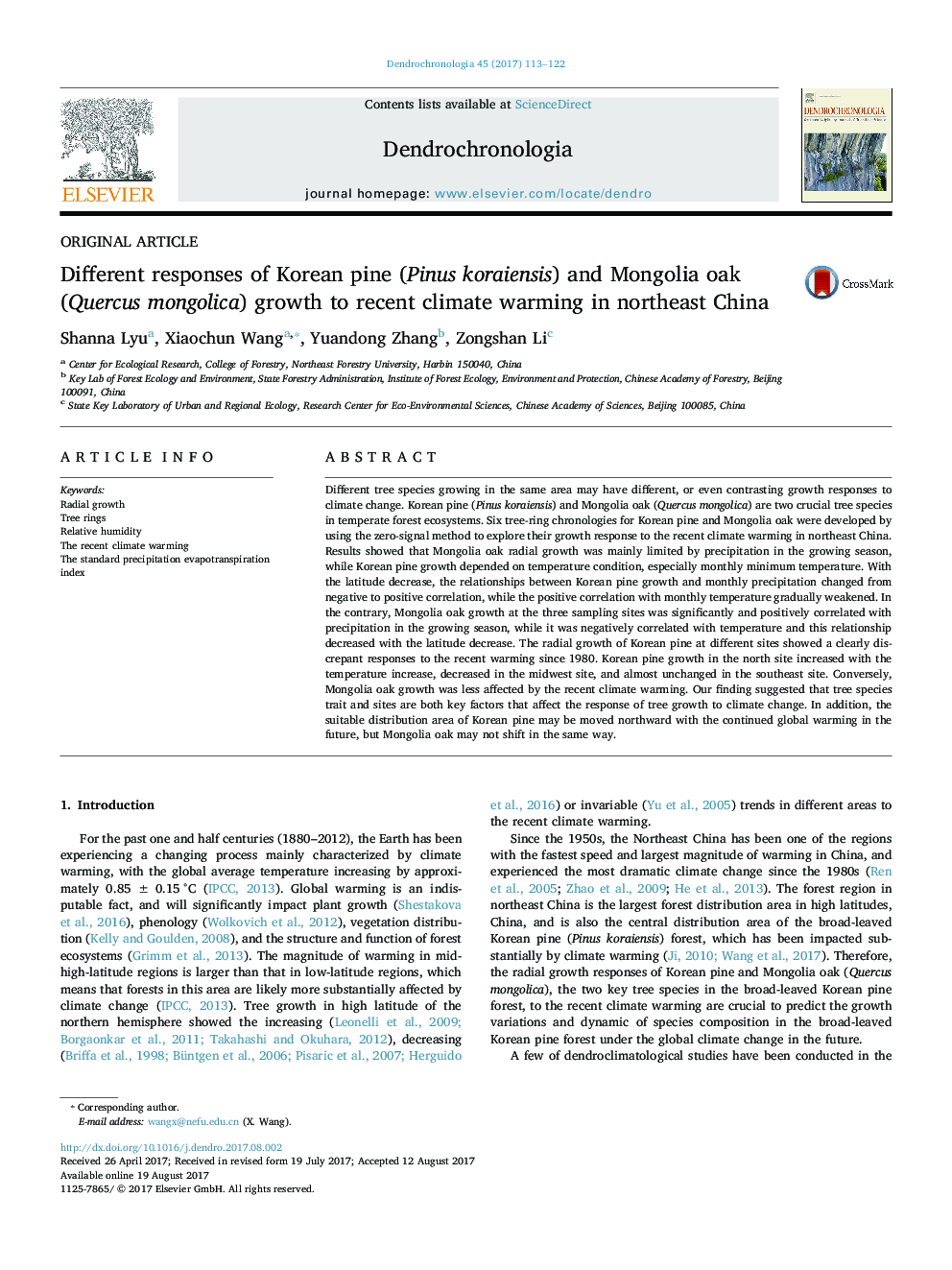| کد مقاله | کد نشریه | سال انتشار | مقاله انگلیسی | نسخه تمام متن |
|---|---|---|---|---|
| 6458979 | 1421196 | 2017 | 10 صفحه PDF | دانلود رایگان |
Different tree species growing in the same area may have different, or even contrasting growth responses to climate change. Korean pine (Pinus koraiensis) and Mongolia oak (Quercus mongolica) are two crucial tree species in temperate forest ecosystems. Six tree-ring chronologies for Korean pine and Mongolia oak were developed by using the zero-signal method to explore their growth response to the recent climate warming in northeast China. Results showed that Mongolia oak radial growth was mainly limited by precipitation in the growing season, while Korean pine growth depended on temperature condition, especially monthly minimum temperature. With the latitude decrease, the relationships between Korean pine growth and monthly precipitation changed from negative to positive correlation, while the positive correlation with monthly temperature gradually weakened. In the contrary, Mongolia oak growth at the three sampling sites was significantly and positively correlated with precipitation in the growing season, while it was negatively correlated with temperature and this relationship decreased with the latitude decrease. The radial growth of Korean pine at different sites showed a clearly discrepant responses to the recent warming since 1980. Korean pine growth in the north site increased with the temperature increase, decreased in the midwest site, and almost unchanged in the southeast site. Conversely, Mongolia oak growth was less affected by the recent climate warming. Our finding suggested that tree species trait and sites are both key factors that affect the response of tree growth to climate change. In addition, the suitable distribution area of Korean pine may be moved northward with the continued global warming in the future, but Mongolia oak may not shift in the same way.
Journal: Dendrochronologia - Volume 45, October 2017, Pages 113-122
